Supporters Implore Village Board to Approve Butler Field Lights, Assessment Grievances Complete
- Details
- Written by: Laura Halligan
- Hits: 6038
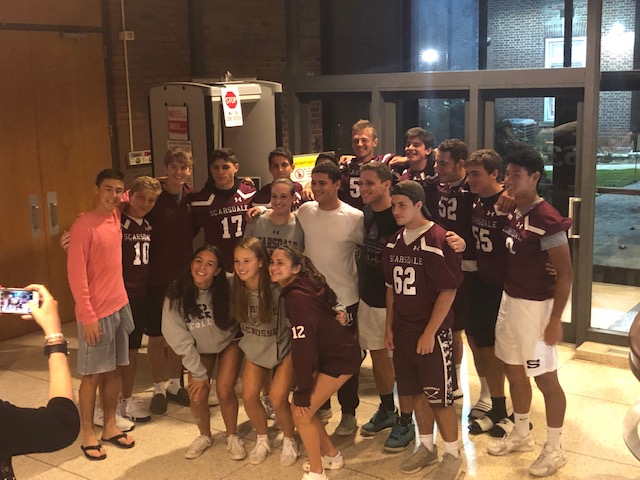 Student Athletes at Village HallThe start of the school year brought another wave of public support for new lights at Butler Field during this week’s village board meeting. Anticipating the September 25 school and village government’s meeting to discuss the Scarsdale Planning Board’s recommendations, student athletes and parents lined up to implore Scarsdale officials to approve the proposed upgrades to the high school athletic field.
Student Athletes at Village HallThe start of the school year brought another wave of public support for new lights at Butler Field during this week’s village board meeting. Anticipating the September 25 school and village government’s meeting to discuss the Scarsdale Planning Board’s recommendations, student athletes and parents lined up to implore Scarsdale officials to approve the proposed upgrades to the high school athletic field.
First up was student athlete Sophia Franco (65 Fox Meadow Road), who said, “A lot of our competitors are able to use their field space (more often) because they have lights. If we get the lights, it would be really helpful for a lot of the programs that use (Butler Field) and allow us to practice more and, hopefully, build (those) programs.”
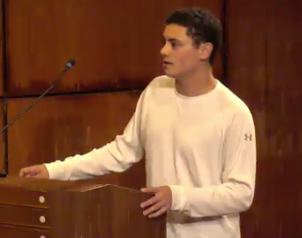 Oliver KrohnOliver Krohn (2 Popham Lane), who plays lacrosse for SHS, followed: “For parents who work late and can’t get to school… the lights would open up a new world. They wouldn’t have to get off work earlier or change their schedules to get to games.”
Oliver KrohnOliver Krohn (2 Popham Lane), who plays lacrosse for SHS, followed: “For parents who work late and can’t get to school… the lights would open up a new world. They wouldn’t have to get off work earlier or change their schedules to get to games.”
Tom Reynolds (54 Franklin Road), a member of SHS’ football team, stated that the lights would provide more flexibility for student athletes’ schedules. “(If) we can practice in the evening, we can get our homework done beforehand, and not just go home, eat, and sleep. Not having to do homework when we’re tired would be incredibly helpful.”
Sophie Carroll, captain of SHS’ field hockey and softball teams, said, “Having lights in late October and as we head into post season would be greatly beneficial for our team to get more practice time in. The days start to become very short and weather becomes an issue… Giving us lights would give us the ability to safely prepare for playoffs and be more competitive.” She continued, “There are a few times per year we would need lights – possibly late September/early October, a few practices in late fall, preseason for softball, and one or two field hockey games per season.”
Coby Rozencwaig, a SHS senior and lacrosse player, then added, “Nothing is more exciting that a game under the lights. I think it would be tremendous for our school and our school spirit.”
Reynolds’ teammate, Chris Saenger (30 Vernon Road), followed, “I think the lights can greatly improve not only our (football) team, but all the other teams; we can extend our practice time and game hours. I don’t think it’s fair that a couple of families nearby hinder this extremely beneficial addition.”
Then, it was time for the adults to speak. Kate Conlan (212 Madison), representing Maroon and White said, “The discussion about the lights has been going on for a year but, honestly, it’s really been going on for a decade.” She then outlined the steps the board of education has taken in vetting the proposal and considering community input. “This was not a rushed decision.” Conlan reiterated the BOE’s position that permanent lights would provide considerable benefit; a high-quality, environmentally sound system has been selected; additional steps have been taken to alleviate negative noise impacts; and additional natural screening around the field will assist in offsetting any drawbacks of the new installation.
Conlan concluded her remarks by saying that the new lights and sound system “will deliver profound benefits to the wide Scarsdale community… while improving conditions for nearby community members who voice concerns that the usage of the town’s only turf field would negatively impact their own desires… To place substantial additional constraints on this project... cannot be done without creating substantial detriments to the benefits these lights were meant to provide.”
Claire Paquin (13 Harcourt Road) then commented, “I bought my property on top of the high school; that was a very conscious decision. From my daughter’s window we see the lights (at night) -- a good solution? Blackout shades.” Everybody (on Harcourt) knew when they bought their properties where they were… There is no traffic on Harcourt Road. Increasing practice (time) is not going to increase traffic. What it is going to do is make our teams better.” She added, “If we put restrictive covenants on (the use of lights) -- say until 8:00 pm -- the fields will be useless in the spring. The sun sets at 8:00 pm in May. Why would we have lights?”
 Steve NicholasStephen Nicholas, after noting he was a graduate of Scarsdale High School, said, “The sense of community we have now would be enhanced simply by allowing siblings watch their brothers and sisters play sports in some evening games, and not always having to miss them because they’re attending their own practices. I think that’s important as far as developing community and family.” He added, “We need to do everything we can to enhance and support athletic activity as obesity goes up; and, we know that the single most significant factor in the reduction of drug use is participation in athletics at the high school level… We are obliged to encourage this participation.” Nicholas wrapped up by stating, “We don’t want to get our neighbors upset but, at the same time, I think the fear mongering that’s going on – that a 9:00 or 8:00 game is going to change people’s lives -- has to be treated with some practicality.”
Steve NicholasStephen Nicholas, after noting he was a graduate of Scarsdale High School, said, “The sense of community we have now would be enhanced simply by allowing siblings watch their brothers and sisters play sports in some evening games, and not always having to miss them because they’re attending their own practices. I think that’s important as far as developing community and family.” He added, “We need to do everything we can to enhance and support athletic activity as obesity goes up; and, we know that the single most significant factor in the reduction of drug use is participation in athletics at the high school level… We are obliged to encourage this participation.” Nicholas wrapped up by stating, “We don’t want to get our neighbors upset but, at the same time, I think the fear mongering that’s going on – that a 9:00 or 8:00 game is going to change people’s lives -- has to be treated with some practicality.”
Rippy Phillipps, who oversees Scarsdale Youth Football, approached the microphone next, carrying a poster commemorating the first Scarsdale game played under the lights. “Congratulations Scarsdale,” he said, “we still have the same lights we had in 2001.” Phillips then spoke about his family’s experience living near both an athletic field and firehouse in Scarsdale. “We were about 25 yards from Crossway Field… I don’t remember (anyone) complaining about a fire alarm at night. I don’t remember (anyone) ever complaining about the old guys playing baseball at 7:15 in the morning at Crossway. They were yelling; they were screaming; they were having fun. It didn’t matter. We lived across the field; that was part of the shtick. They were entitled to play.” Phillips continued, “It’s not about six families that are self-motivated; it’s about what we’re doing for our kids.”
Matt Conlan (212 Madison Road) concluded the commentary by further justifying the purpose of the proposal: “The opportunity to be on (the field) until 9:00 at night is not the intention; we want the flexibility to have lights available until 9:00 on those nights it’s needed… It’s really the option and flexibility of having (them) when our fields are closed, so our athletes don’t’ have to go days or weeks without practice. It’s also allowing for youth sports to get on the field when their fields are closed. The goal is flexibility, rather than volume… The benefits to the community are so obvious.”
So, stay tuned. A quick look at the Scarsdale Planning Board’s recommendations to the village board seems to indicate that the new lights are a go. The group acknowledged the benefits presented by the proposed lighting and sound systems, and determined that they were improvements over current infrastructure. However, the planning board did acknowledge that it was unable to make recommendations regarding usage, since the installation will lead to increased activity at Butler Field. The proverbial ball now is in the trustees’ court.
* * *
Freightway Update
The village will accept development proposals for the Freightway project this coming Monday, September 16. The proposals will be evaluated and compared by Scarsdale staff and trustees, and consulting firm AKRF, and two finalists eventually will be chosen by a selection committee comprised of Mayor Marc Samwick, Trustee Justin Arest, Trustee Jane Veron, three village staff members, and AKRF representatives. The finalists’ proposals then will be presented to residents, who will be encouraged to comment at a community engagement meeting(s). For more information about the Freightway Development work process, click here.
Lowdown on Last Round of Grievances
This summer, 636 property tax grievances were filed and evaluated by the Scarsdale Board of Assessment Review. Of those, only 118, or 18.55 percent were approved. Last year, a total of 552 grievances were filed and 136, or 24.6 percent, were approved.
When reporting the data, Mayor Marc Samwick mentioned the impact of SALT deduction limits on property values – particularly at the high end of the market -- and addressed recent calls for another revaluation in Scarsdale. He said, “We may start hearing calls for a revaluation and I might offer a few items related to that, in terms of why we may want to wait before proceeding quickly...” Samwick explained that 1) the village still is in the process of hiring an assessor; 2) village staff are waiting for the release of new assessment software – important, given problems with the existing system, and, 3) “It’s appropriate to wait until there is stability in the real estate market after the adjustment resulting from the implementation of SALT deduction limits.” Samwick continued, “Based on discussions with market professionals, the market appears to be in the midst of resetting and establishing a new equilibrium… To conduct a revaluation in the midst of this value resetting process would almost ensure that another revaluation would have to soon follow.”
Buy Your Tickets Today for Scarsdale's First Music Festival
- Details
- Written by: Joanne Wallenstein
- Hits: 3605
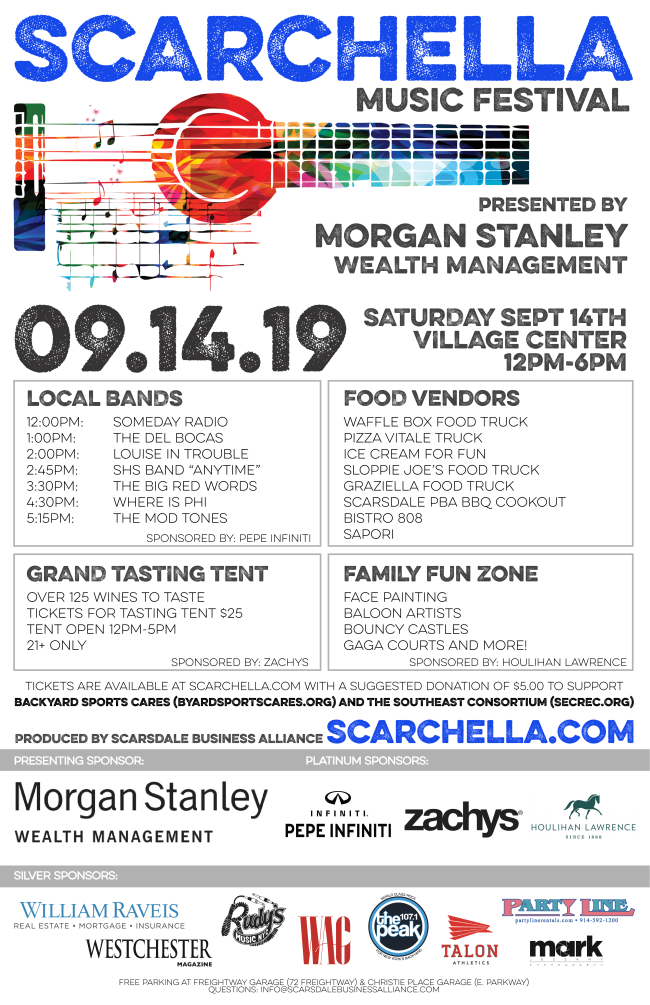 On Saturday, September 14th, the Scarsdale Business Alliance (SBA) will host its first annual Scarchella Music Festival, presented by Morgan Stanley Wealth Management. The event will take place rain or shine on Chase Road and Boniface Circle in Scarsdale Village from 12-6pm. Join us for a festive day full of live music, food, drinks, and family fun activities.
On Saturday, September 14th, the Scarsdale Business Alliance (SBA) will host its first annual Scarchella Music Festival, presented by Morgan Stanley Wealth Management. The event will take place rain or shine on Chase Road and Boniface Circle in Scarsdale Village from 12-6pm. Join us for a festive day full of live music, food, drinks, and family fun activities.
Scarchella Music Festival is an event inspired to bring the community together with local musicians who love to share and perform music. Several bands will be performing throughout the day on the main stage, sponsored by Pepe Infiniti. 12-12:45pm Someday Radio; 1-1:45pm The Del Bocas; 2-2:30pm Louise in Trouble; 2:45-3:15pm Scarsdale High School Band “Anytime;” 3:30-4:15pm The Big Red Words; 4:30-5:15pm Where is Phi; 5:15-6pm The Mod Tones.
In honor of their 75th Anniversary, Zachys will be sponsoring a Grand Tasting Village on Boniface Circle (open from 12-5pm), with over 125 wines available to sip and enjoy from numerous wineries around the world.
Scarchella will feature a selection of savory and sweet offerings from Pizza Vitale Truck, Graziella Food Truck, Sloppie Joe’s Food Truck, Waffle Box Food Truck, Ice Cream for Fun, The 808 Bistro and Sapori. In addition, the Scarsdale Police Benevolent Association will be hosting a cookout barbecue.
The Houlihan Lawrence Family Fun Zone will feature two bouncy castles, face painters and balloon artists. In addition, Friends of Music and the Arts (FMA), a volunteer-run, community organization dedicated to supporting, promoting, and enhancing the music and arts programs in all Scarsdale schools will be providing arts and crafts projects. Talon Athletics will be staffing two Gaga Pits, and PlushBlow Scarsdale will be offering hair braiding in the kids tent. Scarsdale Police and Fire Vehicles will be present along with the Scarsdale Volunteer Ambulance Corps for tours and more.
“Morgan Stanley Wealth Management is proud to be the presenting sponsor for the first annual Scarchella Music Festival,” said Sandra Richards, Morgan Stanley Managing Director and Head of the Global Sports and Entertainment Division. ‘It’s a great opportunity for residents of Westchester to enjoy good music performed by local musicians.”
The SBA is thrilled to announce its partnership with the Scarsdale Conservation Advisory Council (CAC) to make Scarchella a zero waste event. Meals and snacks from food vendors will be served on compostable (made from plants) or recyclable serveware. The Village will be providing bin stations with recycling and compost bins to keep any waste out of the trash. The goal is to have little to no trash from the event! Volunteers from the CAC and the community will be on hand at the bin stations to help and answer any questions. Scarsdale was the first municipality in Westchester County to launch a food scrap recycling program and the SBA is proud to support this community-wide effort by making Scarchella a zero waste event! There will be food scrap recycling kits for sale for residents interested in joining the program!
Scarchella Music Festival will be donating a portion of proceeds to Backyard Sports Cares (byardsportscares.org) and The Southeast Consortium (secrec.org). Our donation will help fund community programs for those with limited access and special needs right here in Westchester County.
While this is a free community event, there is a suggested charitable donation of $5. In order to enter the wine tent and consume alcohol, you must show ID that you are over 21 and purchase a wristband for $25. All food and non-alcoholic beverages are a pay as you go. Donations and wristbands are available online now for purchase at SCARCHELLA.COM and will also be available at the festival by cash or credit card.
The SBA is thankful to all of the Scarchella Music Festival event sponsors for their generous support. Presenting Sponsor: Morgan Stanley Wealth Management;
Platinum Sponsors: Pepe Infiniti, Zachys, Houlihan Lawrence; Silver Sponsors: William Raveis, Compass, Westchester Magazine, WAG Magazine, Talon Athletics, Mark Jessamy Photography, Partyline Rentals, Rudy's Music, 107.1 The Peak.
FREE PARKING is available in the Freightway Garage and adjacent outdoor parking lot (72 Freightway) as well as the lower two levels of the Christie Place Garage on East Parkway.
Scarchella is a not-to-be missed experience! The SBA is a non-profit organization dedicated to supporting the Village of Scarsdale and its local businesses.
For information and tickets: scarchella.com - info@scarsdalebusinessalliance.com.
BOT Reviews Security, Sets Hearing on Ethics and Approves Subdivision Fees for 2 Cooper Road
- Details
- Written by: Joanne Wallenstein
- Hits: 4801
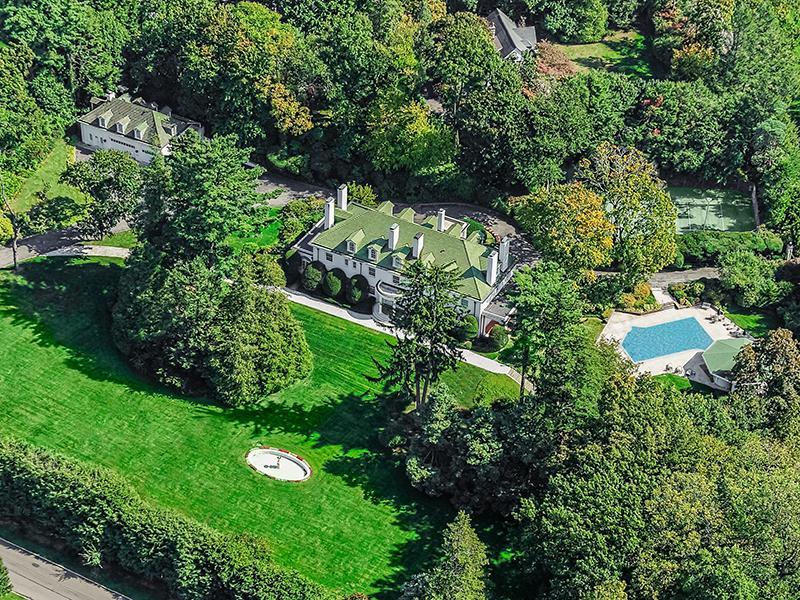
Community security was the focus of a work session prior to the 8-13 meeting of the Scarsdale Board of Trustees. The Board heard a report and assessment of the Scarsdale Police Department from Police Chief Andrew Matturro and queried him on department affairs. Matturro was proud to announce that the Scarsdale Police Department is the only department to have national accreditation in Westchester County and is among a select 1,080 departments with that distinction nationwide.
Matturro provided an overview of crime in town, reporting that burglaries were down to only two so far this year, along with a reduction in DWI arrests. Even identity thefts have declined.
When questioned about the department’s relationship with the school district, Matturro said that he attends quarterly meetings with Director of Students Services Eric Rauschenbach, Security Chief Mike Spedalliere as well as Jay Genova from Scarsdale Family Counseling Services where they review and share information. He said that communications inside the school buildings is being enhanced and when schools conduct drills and lockdowns, police are on site to observe and evaluate. A police officer is a member of the District Safety Team as well.
At the Board of Trustees meeting, Matturro shared the following recommendations from the department on safeguarding your home against burglaries:
-Watch the crime prevention videos on the Village Website.
-Alert police anytime if you see something suspicious at 722-1200. He noted that if you call 911 from a cell phone you will reach the state police and you should ask to be connected to the Scarsdale police.
-Consider using home video surveillance systems
-Make your home appear occupied – leave lights and televisions on
-Use motion sensor lights outside
-Use quality locks and deadbolts
-Consider using a motion detector inside and set your alarm when you are not home
-Be an observant neighbor and alert the police
-Be careful about the use of social networks that may let people know that you away.
A group of older residents who lives at 50 Popham Road in the Village attended the work session to express their concerns about safety when crossing Popham Road, including the timing of Village streetlights and some blind corners that pose a hazard to pedestrians. They say crossing Popham Road is dangerous for residents of 50 Popham and for people going to medical appointments at Overhill Road or going to HSBC Bank. They asked for the Village to have a review of the traffic.
Village Manager Steve Papplardo responded, saying, “We can meet with the people in the neighborhood. We have done studies in the past but we are always looking to improve.”
At the subsequent meeting of the Village Board Scarsdale Mayor Marc Samwick commented on the following:
-The Village reviewed their cyber security following ransom attack at another municipality. The Village has enhanced security to protect village records and continues to have an active dialogue on cyber security.
-New York State approved a 1% increase to Westchester sales tax to 8.375%. The mayor said that two thirds of village revenues are derived from property taxes and this increase in the sales tax could provide additional revenues to the Village. However, though Scarsdale is projected to receive $900,000 more in sales tax, the first $180,000 will be used to replace state aid that is being discontinued. Samwick said, “We will wait to see how the Village’s share materializes.”
-The Village has purchased its first electric vehicle using incentives from state and county grants. Maintenance costs will be lower and overall, it is less costly than purchasing a gas vehicle. If it operates as expected the Village will look to purchase more electric cars down the line.
Subdivision Fee:
During Public Comments, an attorney for real estate developer Bobby Ben-Simon spoke about the recreation fee for a three-lot subdivision on a 3.75 acre lot at 2 Cooper Road. The site will be subdivided to retain the original home, built in 1914, and to build two additional homes. The Scarsdale Planning Board approved the subdivision and recommended a fee of 5% per lot. The attorney asked for that fee to be reduced to 4%. She said that the higher fee was “not proportionate to the impact the new households would have on the Village.” Later at the meeting, the Board of Trustees approved a resolution to assess a fee of $125,000 or 5% for each of the two lots.
Youth Tennis:
Bob Harrison came to the podium with trophies and reviewed the results of the 35th youth summer tennis league. He thanked the recreation department and league directors and announced the winners of each of the draws.
Scarchella Music Festival:
During comments from the Board, Trustee Jane Veron invited the community to attend the first Scarchella Music Festival on Saturday September 14 from 12- 6 pm in Scarsdale Village, hosted by the SBA. She said it “will increase vitality in the village center and allow us to enjoy local bands.” Zachys will have two big tasting tents with wines to sip and enjoy, there will be food trucks and restaurants will sell food outside. The PBA will host a cookout and there will fun for the entire family.
In an ongoing effort to increase communication with residents, Trustees Seth Ross, Rochelle Walden and Jonathan Lewis spoke to residents at the Scarsdale Pool and found it very worthwhile.
Ethics:
A public hearing will be held on Tuesday September 10 on changes to Village Code regarding ethics of elected officials and Village employees. The changes specify which elected officials and employees are required to file an annual disclosure form, the annual due date and the penalty for failing to do so. View the proposed changes to the code here:
This revision may have been prompted by an April 2019 statement from the League of Women Voters of Scarsdale that said, “Board of Trustees’ Conflicts of Interest," and read as follows:
"The League encourages local volunteerism and appreciates the fact that trustees often have a history of active involvement in community-based organizations before they are elected to office. In keeping with the spirit of fostering the community engagement of all residents, and in accord with Trustee Arest’s comments at the information session that “the trustees are elected to represent the entire community,” the League commends the Board for self-regulating and adhering to the practice of discretionary recusal in the face of potential, real, or perceived conflicts of interest stemming from the activities of Board members’ spouses and immediate family members who engage in local advocacy and have volunteer roles in local organizations, boards, and councils.
The League likewise encourages members of the Board of Trustees to be more cognizant of the Board members’ own current activities and affiliations, volunteer and otherwise, with regard to Board action and Board liaison assignments. The change from the Board’s committee structure to full Board working groups may diffuse the impact of any single member’s potential conflict of interest, real or perceived; however, just as the Board has addressed spousal or family issues by means of discretionary recusal, the League urges the trustees to consider whether their own current activities present a potential, real, or perceived conflict that should trigger recusal from particular issues that come before the Board.”
Trustees then approved a lengthy stream of resolutions:
-$100,000 from the 2018-19 Village Fund Balance will be spent to remove underground fuel storage tank
-The Village approved the sale of surplus vehicles for $34,500.
-They agreed to execute a license for SCARVAC to install a radio and antenna on the Boniface Water Tower at 72 Garden Road.
-They accepted a gift of $50,000 from the Friends of the Scarsdale Library for the renovation of the Scarsdale Library
-They agreed to a funding request of $49,000 to continue the Scarsdale Edgemont Family Counseling Aging in Place Initiative.
-They approved spending of $16,334 for the Southeast Consortium to provide therapeutic and recreation services for disabled individuals.
-They rejected bids for a drainage project at Winston Field near Boulder Brook and will look for grants and alternative solutions. According to the resolution, “The project budget anticipated a design solution involving installation of curtain drains throughout the field, the project design professional determined that, given soil composition and the goal of making the field playable within a 24-hour period following a rain event, a more significant level of field renovation would be required than was originally anticipated.”
-Brad Cetron of 28 Oxford Road was appointed to the Board of Architectural Review to fill the unexpired term of Mera Faddoul.
Scarsdale Democrats Hold Summer Fundraiser
- Details
- Written by: Michelle Lichtenberg
- Hits: 5672
 Andrea Stewart-Cousins, Ben Boykin, Amy Paulin and Eliot EngelThe Scarsdale Democratic Town Committee held their summer fundraiser at the home of Amy Paulin and Ira Schulman. It was a particularly high-spirited event in part because of how successful both State Assemblywoman Amy Paulin and State Senator Andrea Stewart Cousins have been in Albany since January. This year 33 bills sponsored by Paulin passed both houses and Cousins reported that a total of 900 bills were passed. George Latimer spoke eloquently about democracy.
Andrea Stewart-Cousins, Ben Boykin, Amy Paulin and Eliot EngelThe Scarsdale Democratic Town Committee held their summer fundraiser at the home of Amy Paulin and Ira Schulman. It was a particularly high-spirited event in part because of how successful both State Assemblywoman Amy Paulin and State Senator Andrea Stewart Cousins have been in Albany since January. This year 33 bills sponsored by Paulin passed both houses and Cousins reported that a total of 900 bills were passed. George Latimer spoke eloquently about democracy.
The Democratic Town Committee is galvanized to work for continued results in the upcoming election cycle.
In attendance were Amy Paulin, Andrea Stewart Cousins, Ben Boykin,George Latimer, Elliot Engel, and several judges. Local officials included Scarsdale Mayor Marc Samwick, School Board member Ron Schulhof, past mayors Jon Mark, Bob Steves, and Carolyn Stevens. Democratic Committee Chair Mark Lewis presided.
Andrea Stewart Cousins spoke how she appreciates representing Scarsdale because:
1) The smooth transitions from one Village administration to the next.
2) She doesn’t have to worry about what we are thinking because we tell. (That was a laugh line). 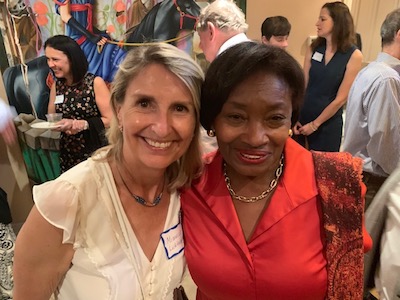 Michelle Lichtenberg and Andrea Stewart-Cousins
Michelle Lichtenberg and Andrea Stewart-Cousins
3) She appreciates the Village’s support over the years.
34 Year-Old Man Found Dead on Central Avenue
- Details
- Written by: Joanne Wallenstein
- Hits: 5671
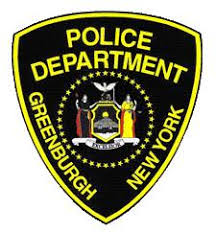 Greenburgh Police are reporting a case of apparent suicide in the early morning hours of Sunday July 21. Police responded to the area of 340 South Central Avenue at 5:25 am on July 21 where there found a man on the ground who was not breathing. The 34 year-old man was pronounced deceased at the scene from an apparent self-inflicted injury.
Greenburgh Police are reporting a case of apparent suicide in the early morning hours of Sunday July 21. Police responded to the area of 340 South Central Avenue at 5:25 am on July 21 where there found a man on the ground who was not breathing. The 34 year-old man was pronounced deceased at the scene from an apparent self-inflicted injury.
According to Sergeant Brian Matthews the scene was secured and a crime scene established. Greenburgh detectives responded along with the Westchester County Medical Examiner’s Office. No evidence at the scene suggested any foul play.
The investigation is continuing and the identification of the deceased is being withheld pending notification of the next of kin and the findings of the Medical Examiner.










